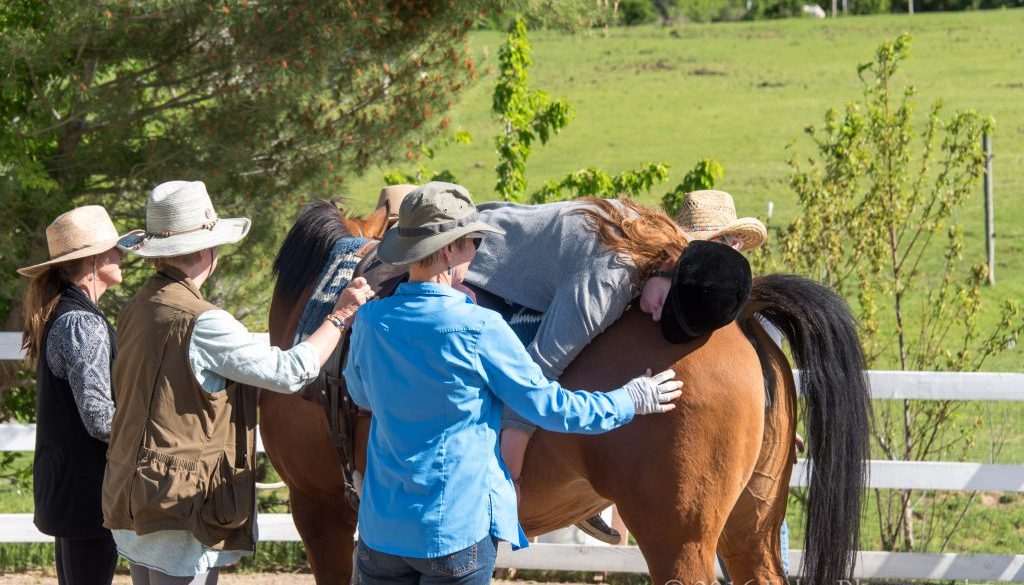Research on Horse/Human Connection Benefits
LYING ON (OR AGAINST) THE HORSE
Lying on the back of a horse for 60 seconds or longer, face-down on the horse’s rump, activates the part of the vagus nerve which runs along the front of the body. Several things occur with this exercise. There is a gentle compression of the diaphragm and lungs. There is an energetic connection between the horse’s body and the woman’s body so that respiration and heart rate entrain with the slower rates of the horse. Similar effects are accomplished by leaning into the horse. This effect has been measured in scientific research:
Recent studies conducted by the Institute of HeartMath provide a clue to explain the bidirectional “healing” that happens when we are near horses. According to researchers, the heart has a larger electromagnetic field and higher level of intelligence than the brain: A magnetometer can measure the heart’s energy field radiating up to 8 to 10 feet around the human body. While this is certainly significant it is perhaps more impressive that the electromagnetic field projected by the horse’s heart is five times larger than the human one (imagine a sphere-shaped field that completely surrounds you). The horse’s electromagnetic field is also stronger than ours and can actually directly influence our own heart rhythm.
Horses are also likely to have what science has identified as a “coherent” heart rhythm (heart rate pattern) which explains why we may “feel better” when we are around them. . . .studies have found that a coherent heart pattern or HRV is a robust measure of well-being and consistent with emotional states of calm and joy–that is, we exhibit such patterns when we feel positive emotions.
A coherent heart pattern is indicative of a system that can recover and adjust to stressful situations very efficiently. Often times, we only need to be in a horse’s presence to feel a sense of wellness and peace. In fact, research shows that people experience many physiological benefits while interacting with horses, including lowered blood pressure and heart rate, increased levels of beta-endorphins (neurotransmitters that serve as pain suppressors), decreased stress levels, reduced feelings of anger, hostility, tension and anxiety, improved social functioning; and increased feelings of empowerment, trust, patience and self-efficacy.
Often upon rising up from the prone position, a woman is able to take a deep, abdominal breath for the first time in months. Measurements of heart rate before and after this exercise show measurable improvements in both heart rate and oxygen levels in the blood.
Since the vagus nerve controls the autonomic nervous system, improvements in digestion and other functions are benefitted, as well.
Read article in PATH Intl Strides magazine on this topic:
http://isar.dk/wp-content/uploads/2012/02/Dr_Kaye_Article.pdf
http://isar.dk/wp-content/uploads/2012/02/Dr_Kaye_Article.pdf
